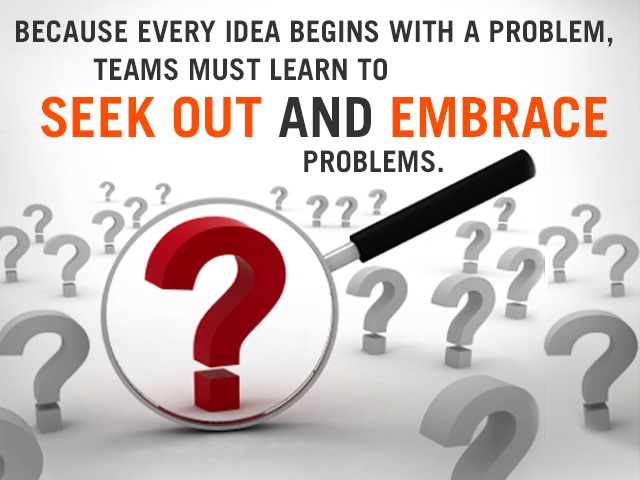When an organization starts a high-performing idea system, rarely is there a shortage of ideas. Ideas come from problems, and people are already aware of many obvious problems and opportunities. They just haven’t had the chance to correct them before.
But after a while – six months, nine months, a year, depending on the circumstances – no matter how much they encourage their people, the most common concern we hear from managers is “Our people seem to be running out of ideas.”
No idea system stays successful for long unless the organization provides training and education to improve their people’s problem sensitivity and does things to bring new kinds of problems to the surface – problems that the organization needs to solve to move in its desired direction.
There are many ways to increase a person’s problem sensitivity. One of the most direct is an idea activator, a short training module that gives employees new perspectives on their work that will trigger more ideas.
Consider how Subaru of Indiana got to “zero landfill”. Today, its 3,500 employees make 1,200 cars per day, but the company generates less trash in a year than the average family of four does in one day!
The leadership team knew that in order to reach its goal of zero landfill, it had to involve its front-line employees. It also knew that simply asking associates for their “green” ideas would not be enough. Most people have a fairly limited understanding of how to reduce an organization’s environmental impact. For example, everyone knows about recycling, but most recycling offers only limited environmental advantages and is generally not cost effective.
So SIA set out to increase its people’s ability to spot green improvement opportunities by using idea activators. These activators introduced them to simple concepts that the company thought would spark large numbers of small ideas to eliminate landfill waste. There were many idea activators – here are three, by way of example:
- The 3Rs and the waste management hierarchy of “reduce”, “reuse”, “recycle”. The 3Rs were easy to remember and got people to think of ideas beyond simple recycling. Employees were taught to try to move what was done with waste materials further up the hierarchy, because this produced both greater environmental benefits and more cost-savings.
- Dumpster diving. Teams were taught to overturn the dumpsters in their areas, spilling their contents onto the floor where they were sifted and sorted by source and type, and then to systematically deal with them using the 3Rs;
- The difference between recycling and downcycling. Downcycling occurs when the method of recycling reduces the value or quality of the material.
Taken together, all the idea activators made employees see many opportunities for improvement that they would not have seen before.
Subaru did not attain zero landfill because of a few big management initiatives. It was the tens of thousands of small green improvement ideas from its front-line workers that drove the majority of the improvement.


